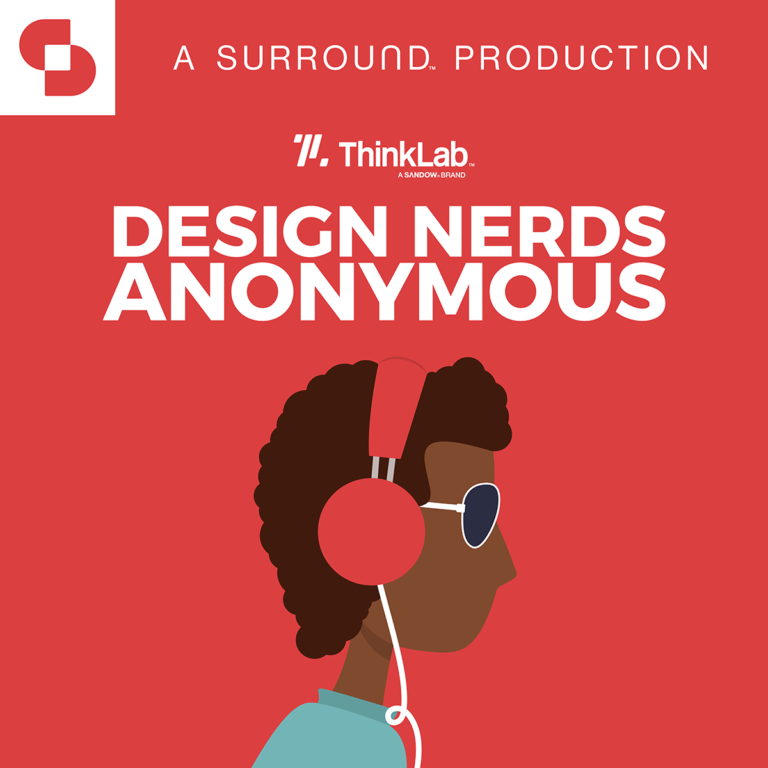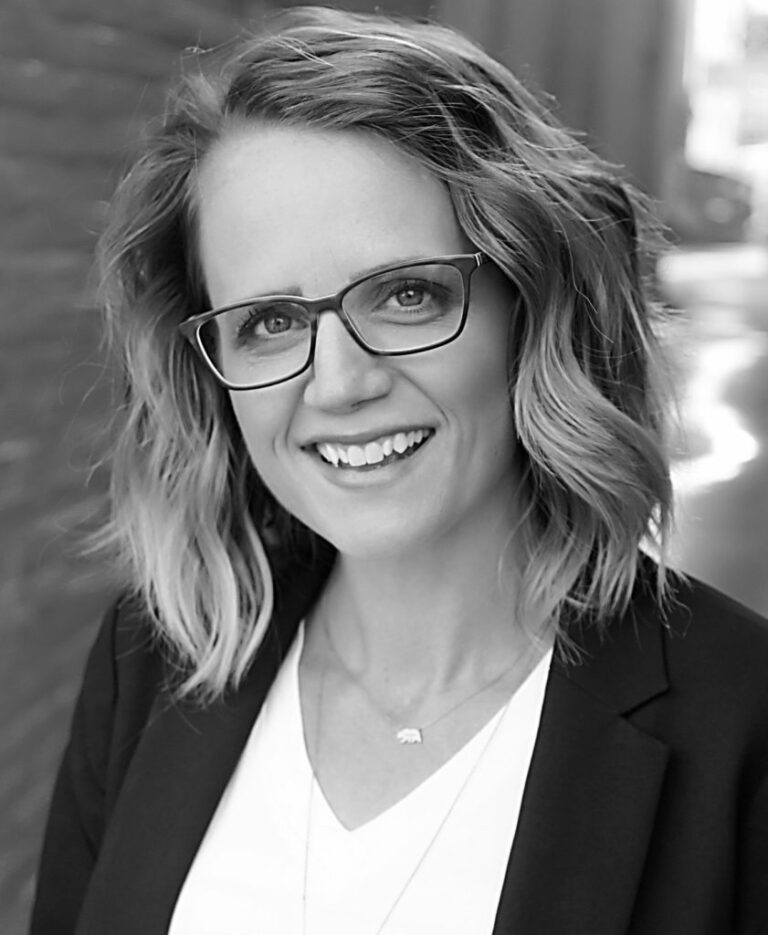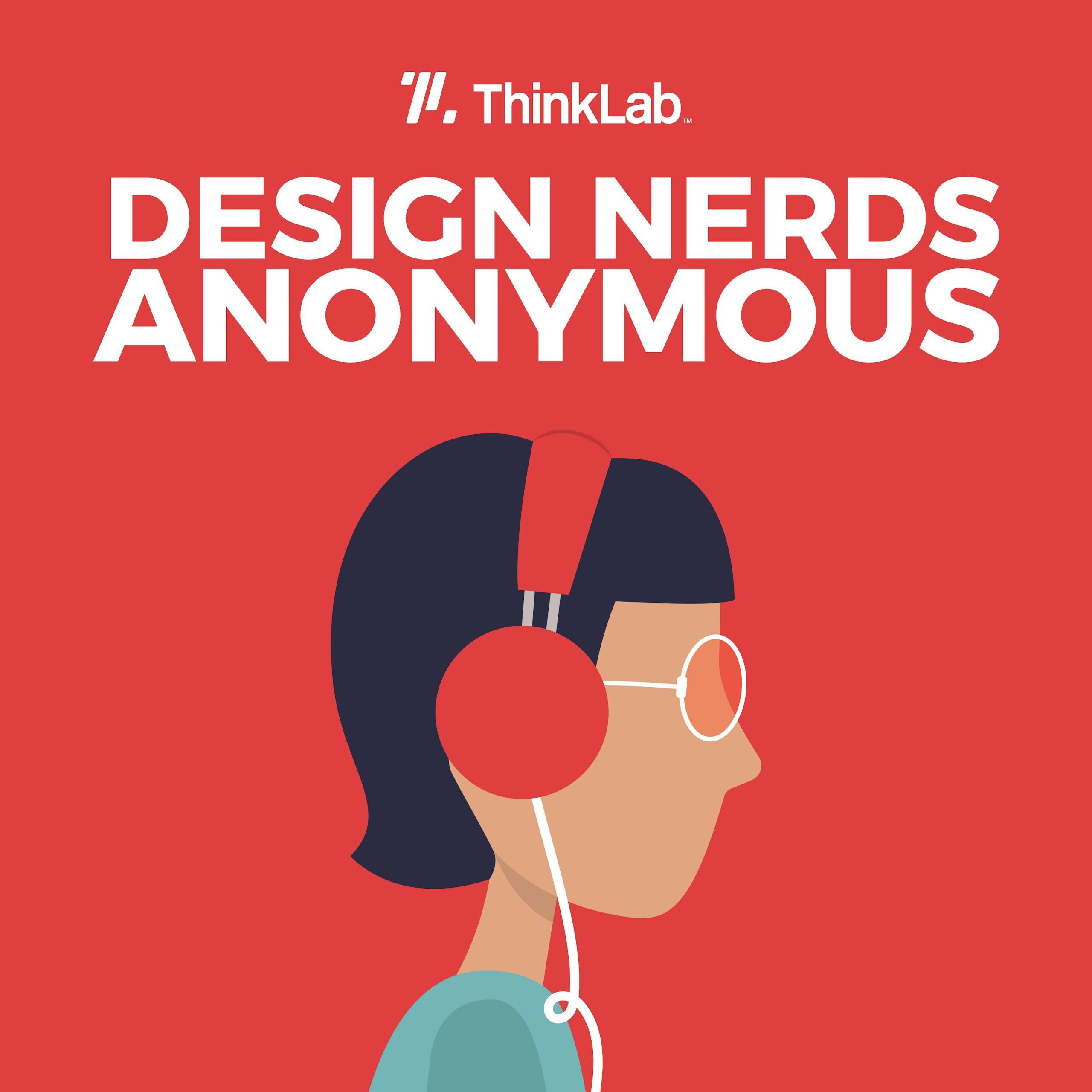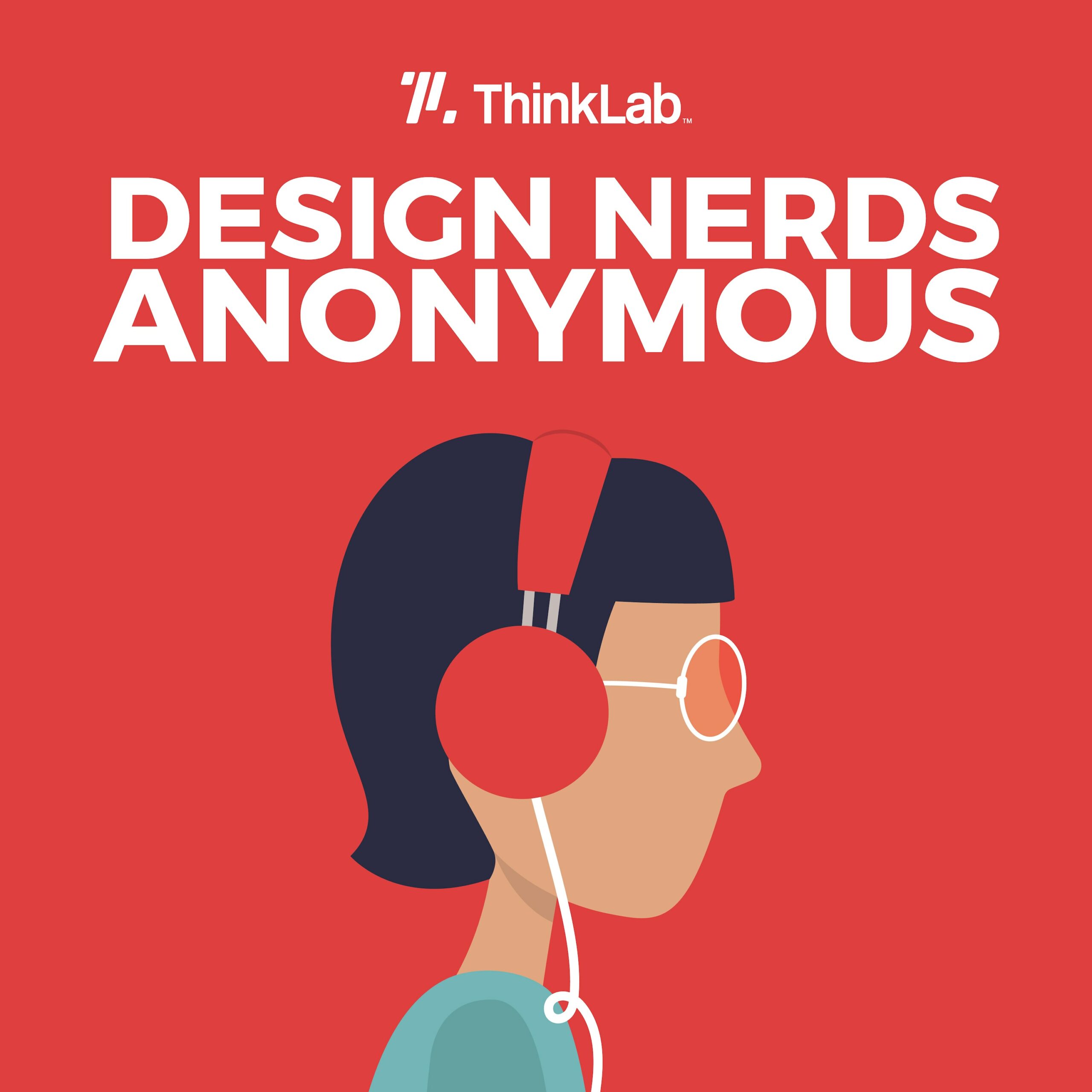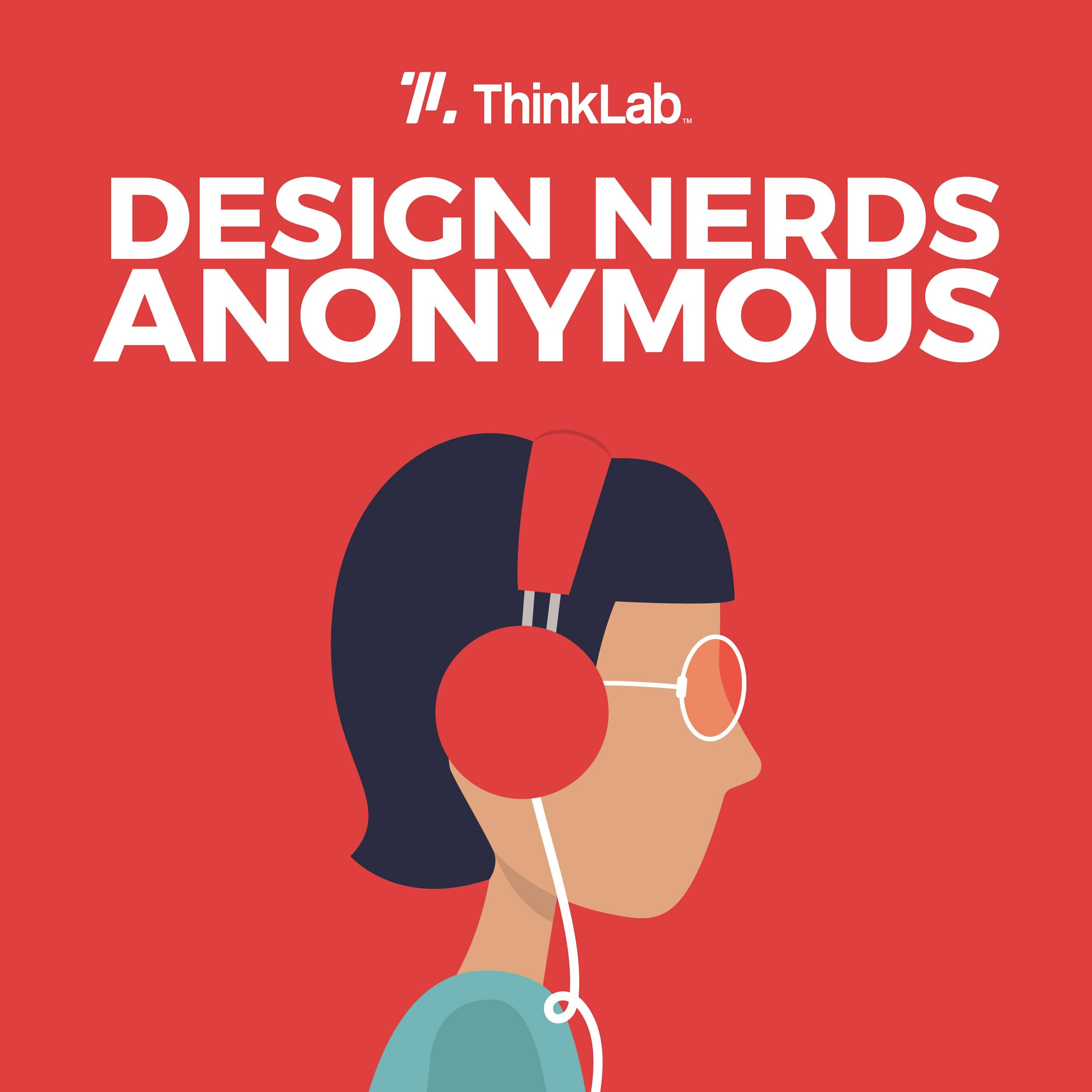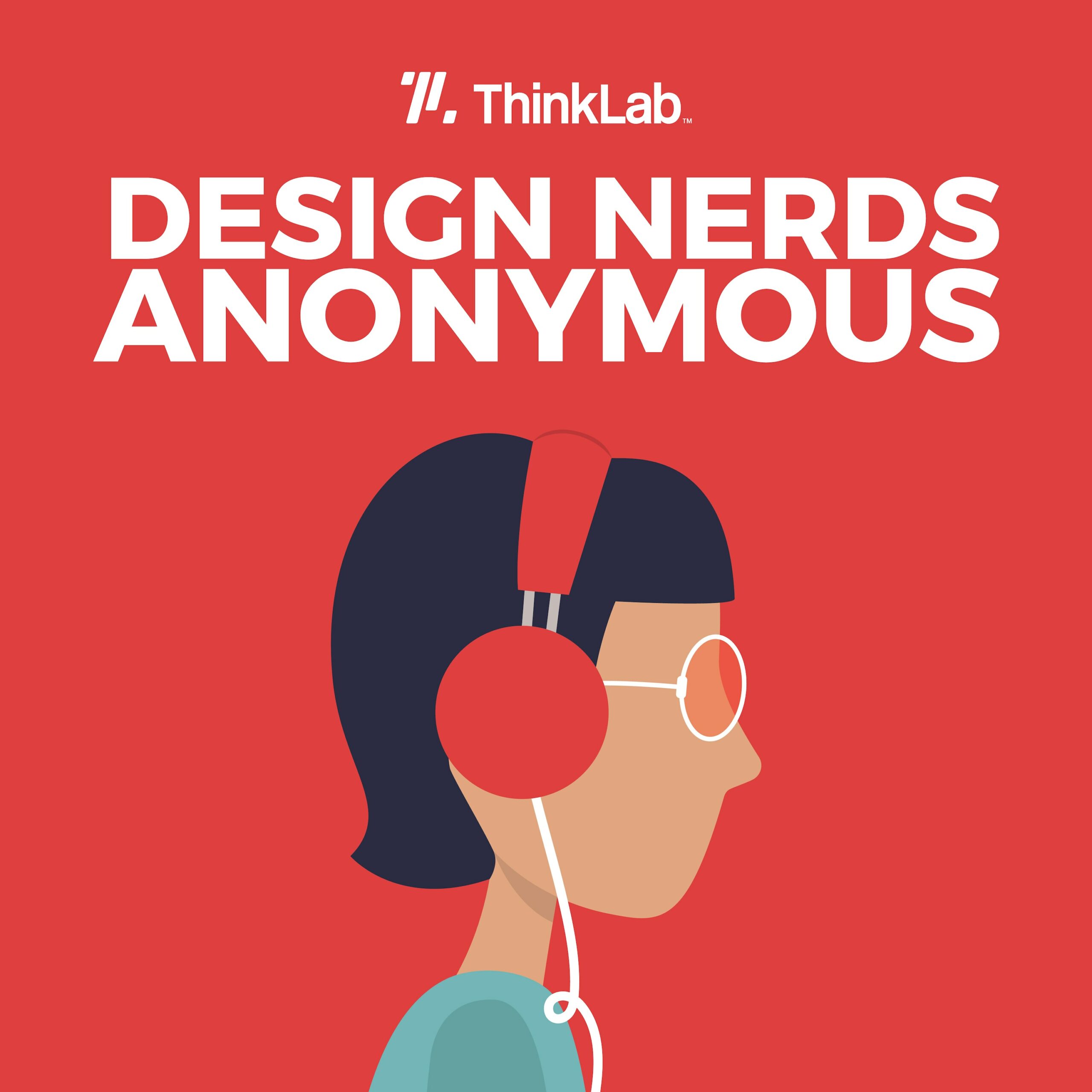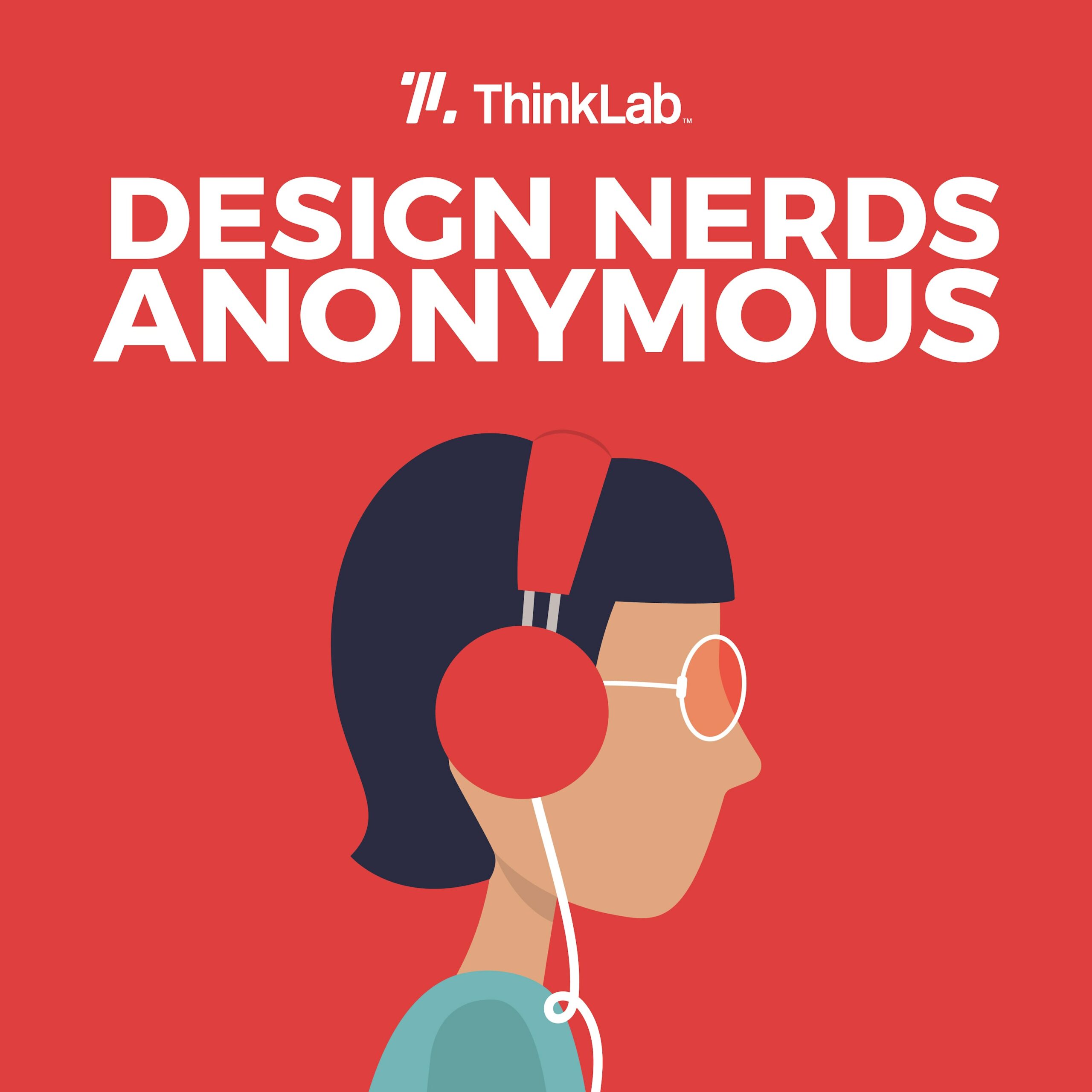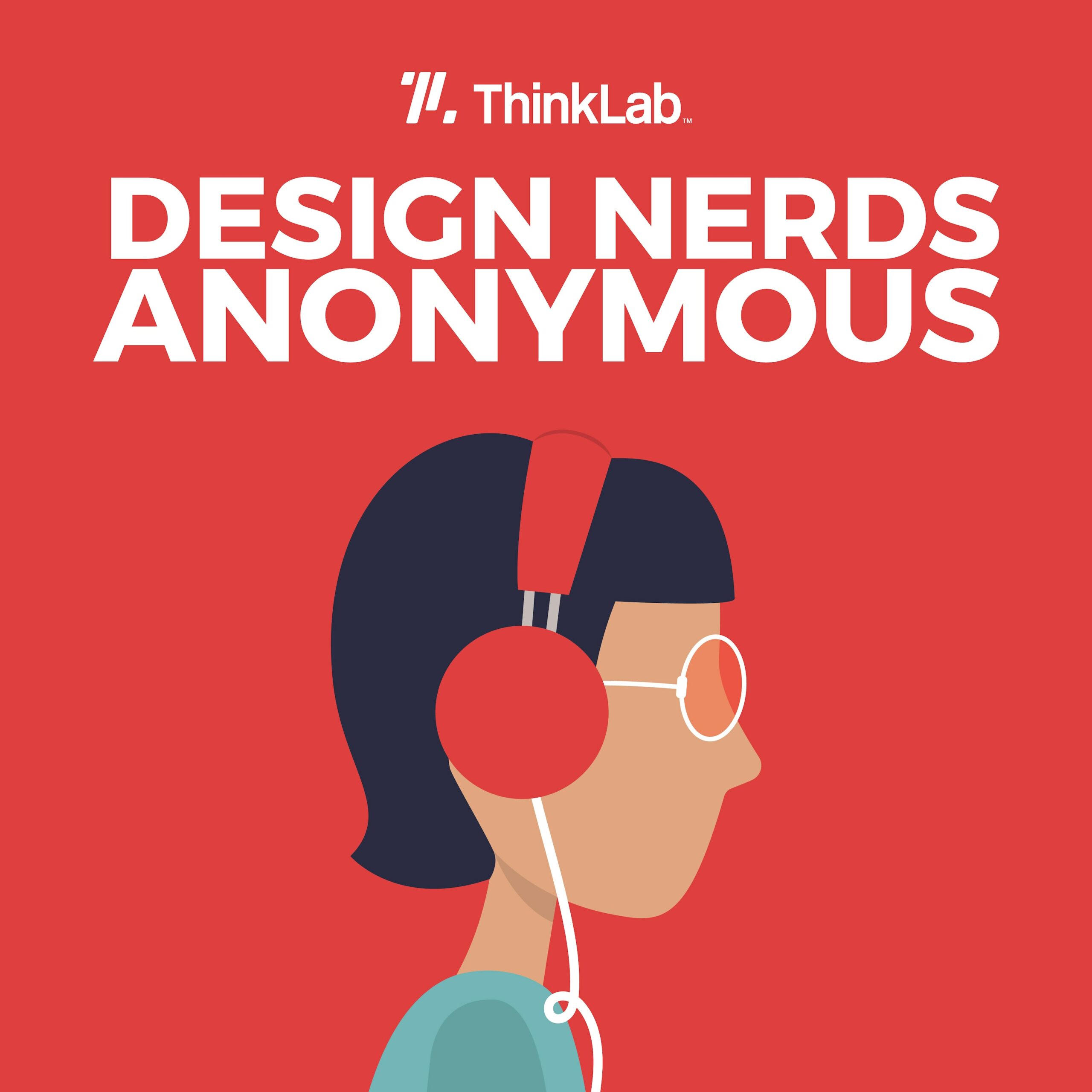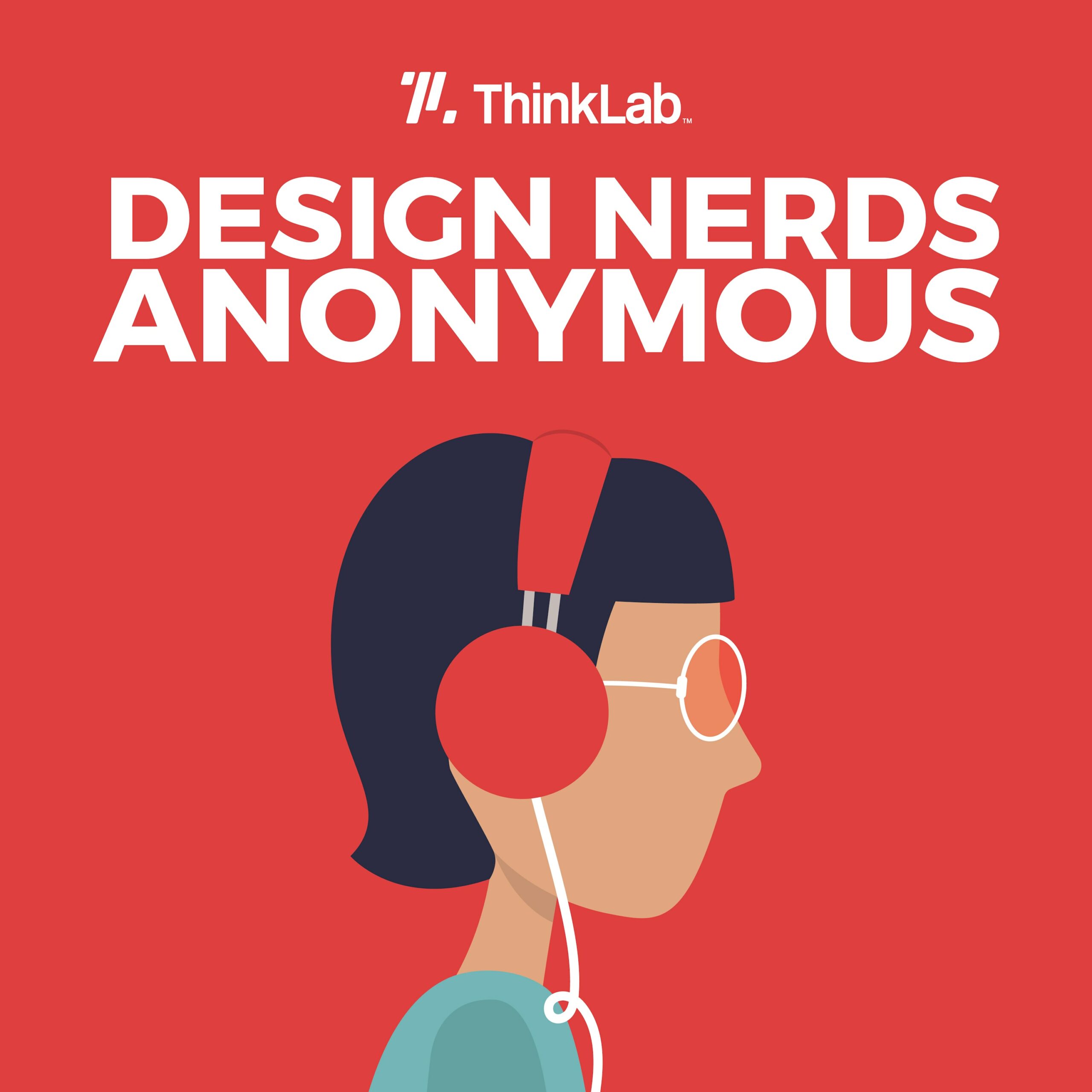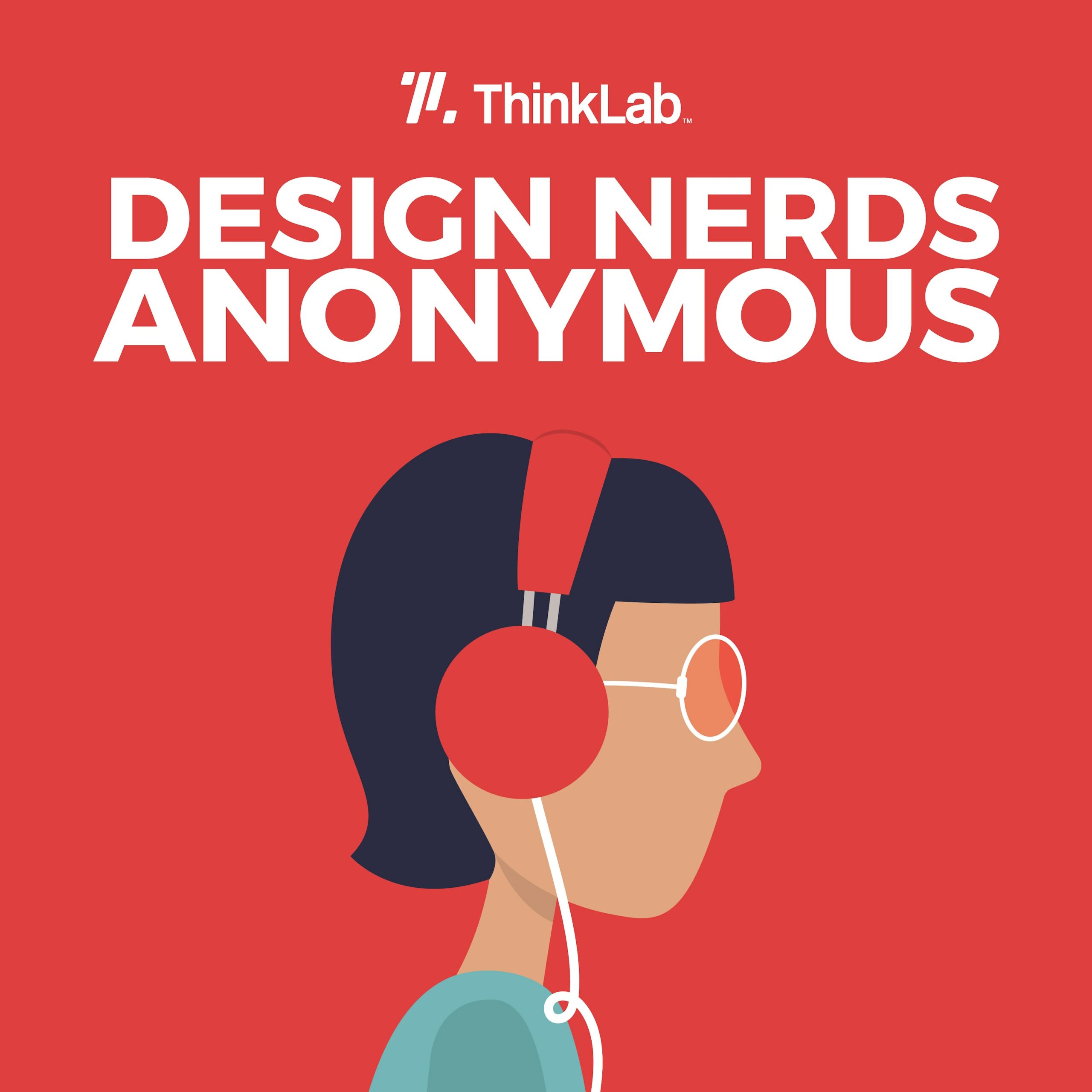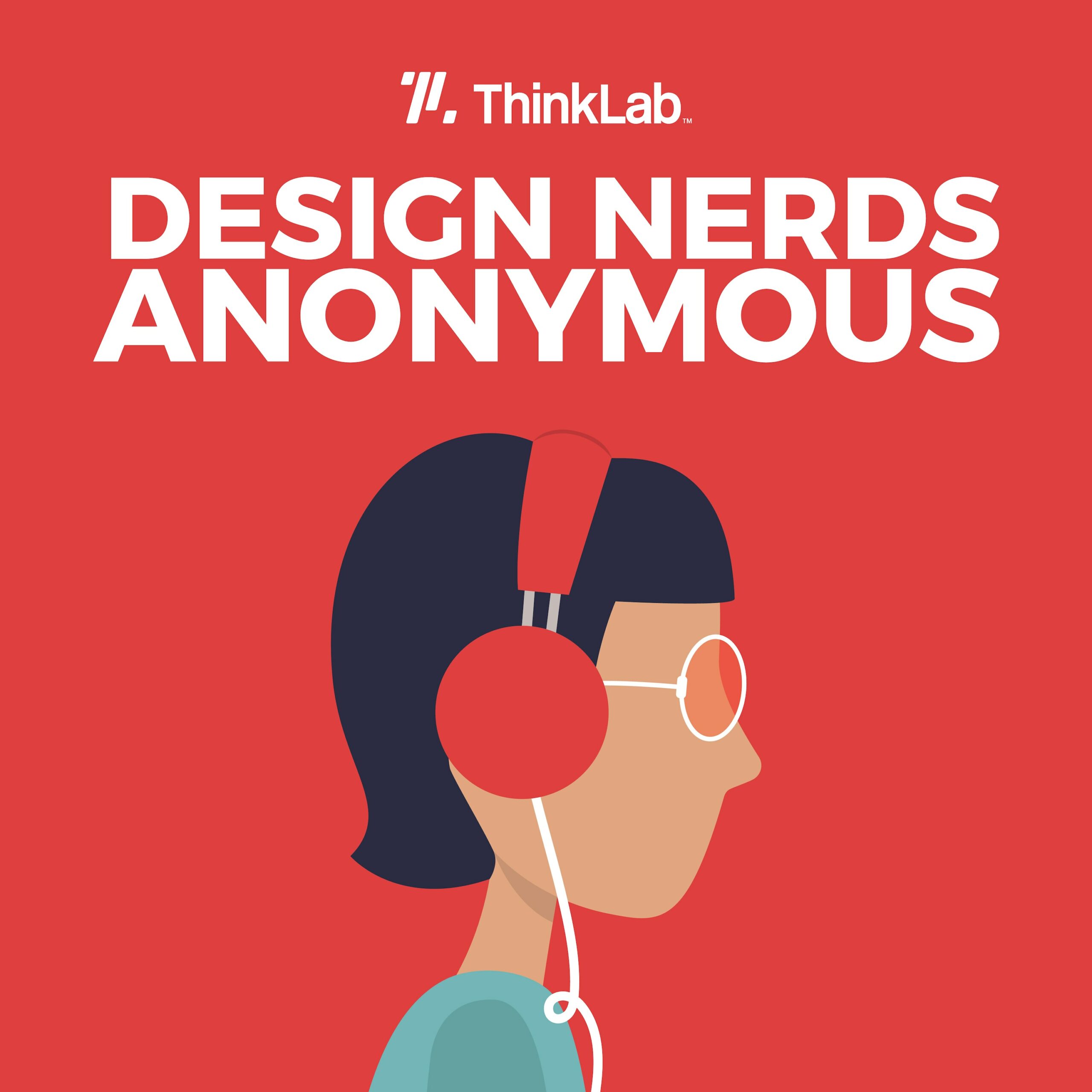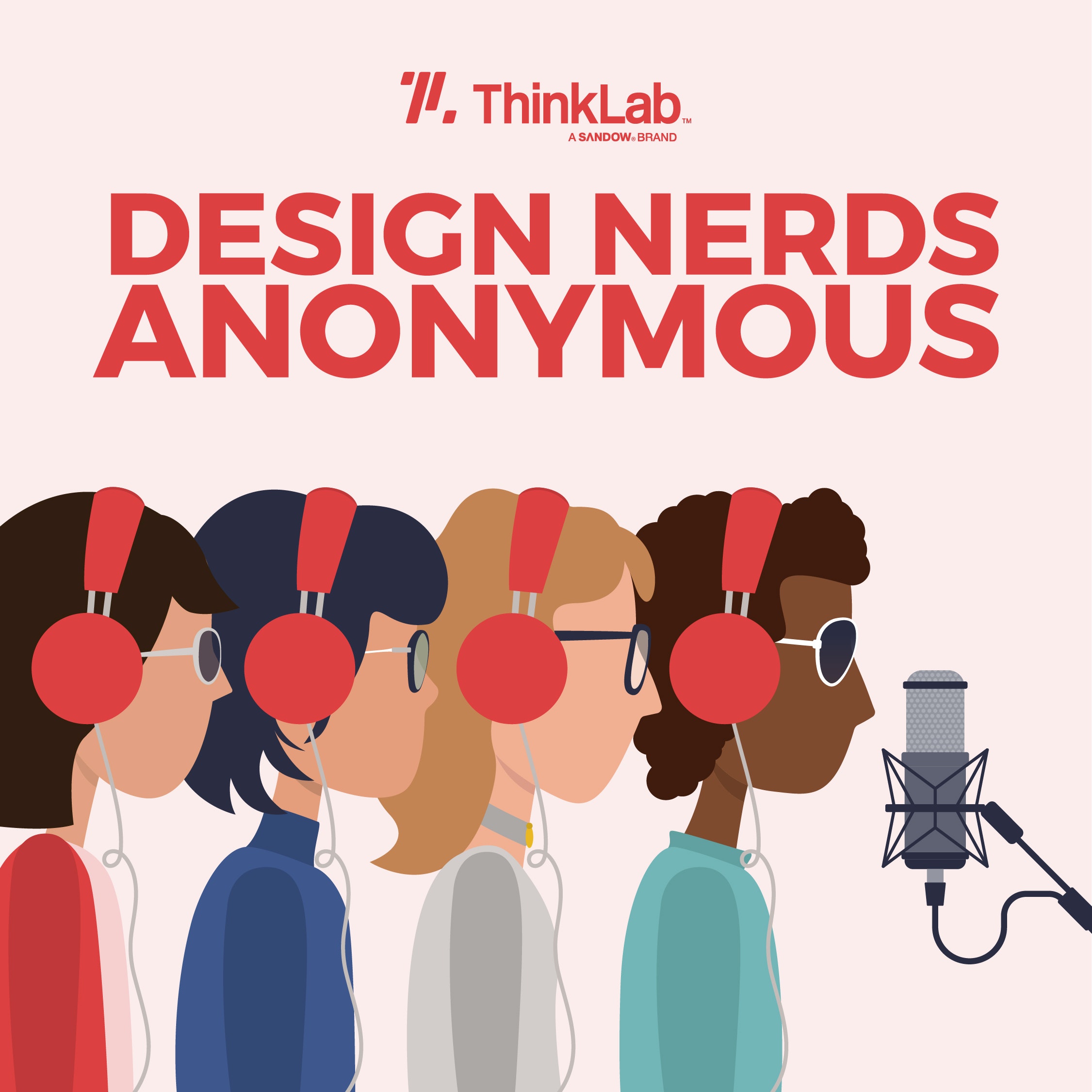In this episode, we explore the concept of belonging within the architecture and design industry. Megan Henshall (Global Events Stategist from Google), shares three crucial dimensions of belonging: being part of a group, sharing common ideas, and connecting with various related groups.
In the second part of the episode, we chat with Kristen Cerutti (Regional Design Director at Nelson Worldwide) and Lilley Thomas (Interior Designer at Nelson Worldwide), to discuss the challenges posed by the return to office work and the potential of technology to enhance, rather than replace, physical interactions.
If you want to emphasize the value of empathy, choice, and adaptability, this episode is a must-listen.
- Uncover the secrets to creating inclusive and belonging-focused event experiences for anyone interested in fostering human connection.
- Learn why belonging matters more than ever in today’s dynamic workplace and event landscape, with practical insights on creating immersive and inclusive environments.
- Discover how establishing personal connections beyond job titles in the workplace can make employees feel like they belong and are part of a larger community.
Guests:
Tune in to our episodes for more, and subscribe so you don’t miss our upcoming episodes.
Thank you to our sponsors Mannington Commercial, THEMART and NeoCon.
Design Nerds Anonymous is a proud member of the SURROUND Podcast Network. Discover more shows from SURROUND at surroundpodcasts.com. This episode of Design Nerds Anonymous was produced and edited by SANDOW Design Group, with music from Blue Dot Sessions. Special thanks to the podcast production team: Hannah Viti, Wize Grazette, and Samantha Sager.
(Please excuse any grammatical errors in this transcript as it was auto-generated from an audio file.)
Welcome to Season 5 of Design Nerds Anonymous, the podcast that sparks curiosity at the intersection of business and design. I’m your host, Amanda Schneider. Every episode in this season is packed with knowledge handpicked from six months of intense research during ThinkLab’s most recent design hackathon.
Amanda: We’re exploring how the ripple up effect of Gen Z is set to drive change. In this episode, we’ll be exploring a wildly important topic, belonging.
In chapter one, we’re joined by Megan Henshall, global events strategist with the Google Experience Institute, an internal slash external innovation effort focused on exploring and reimagining human centered multimodal experience design. Megan has been spearheading. groundbreaking initiatives to cultivate a sense of belonging in both the physical and [00:01:00] digital realms and finding innovative ways to bridge the two.
Together, we’ll explore their beta test of the Belonging Index, which identifies what belonging means to people based on over 750, 000 surveys in 152 languages across 180 countries.
Then in chapter two, we’ll hear from Nelson Worldwide, a top interior design, giant of design, who will help us apply these insights, especially as we think about the workplace of the future. But before we dive in, let’s give a big shout out to our incredible sponsors who make this podcast possible.
All right, my fellow design nerds, let’s meet our chapter one interviewee and hear some of her favorite insights from her research on belonging.
Megan: A little context about myself. I’m Megan Henshall and I lead strategy for the global Event Solutions team at Google. So that particular events team [00:02:00] manages a global portfolio of close to 700 on campus spaces and campus adjacent spaces where we gather, we do over 60,000 events a year, and those range across every sort of use case you can possibly imagine. my role on that team, is to put forth a strategy every year around how we should be thinking about those spaces. also, talent.
Staffing, operational models, and tech. so I spend about 40% of my time in the present sort of anchored to current problems and 60% of my time living in 2030 and beyond, helping the team think more proactively and get ahead of what’s coming. and in a lot of the research we’ve been doing over the past three or four years, the studies we’ve run, the hundreds of focus groups and conversations we’ve had, we’ve discovered that the lack of belonging in our world is.
A real crisis, and not only a crisis, but it’s an imminent threat. one thing I would love for everyone to know and understand is that belonging is [00:03:00] a fundamental human motivation. Most social science theories related to human happiness and flourishing touch on belonging as a critical need in order to get to those places.
The more research we’ve done is almost like, pointalism like painting with the dots, right? This really amazing picture has emerged. That a design practice for belonging is important because belonging is a bridge from surviving to thriving, and not only for humans, but for communities, for organizations, and for business.
Amanda: You said belonging is good for business. so tell us about some of those big ahas that you’ve uncovered. Maybe a few, little nuggets that have surprised you that led you to some of those conclusions.
Megan: 40% of people globally feel isolated at work, which I think is one of the data points that was just staggering to me. we’re spending about 8 billion in the United States alone on diversity, equity, and inclusion initiatives every year. Largely that don’t [00:04:00] move the needle because the thing that is missing, the linchpin there is people feeling as if they belong. a couple other data points that are really interesting is that people are 167% more likely to recommend, a brand, an organization, if they feel like they belong within the way that environment is cultivated.
it absolutely matters to business. I don’t love to lean into the business value metrics, but I think depending on stakeholders that’s important. there’s a real human impact here as well.
Amanda: one of the reasons I’m leaning into business is I think our audience is often very inspired about how they can take research like yours and put it into practice for. Their clients. but I want to make sure that we are saying, how do we put this in practice for our industry as well?
Because I think you would agree with me that if we can really create this sense of belonging for our own companies, it really unleashes them to their full potential and I would say to their [00:05:00] full creative potential as well.
If you had advice for our listeners not only in how they design spaces for others to feel this sense of belonging, but maybe especially for designing a sense of belonging in their own workplaces and cultures and workflows, what advice would you give them?
Megan: I love this question. it’s really simple and it’s pretty low hanging fruit. talk about it. Talk about identities. invite people to share the identities that they hold that are hidden, Talk about hidden disabilities and struggles. Ask about what people’s values are and how they find purpose.
understand what these things look like for the communities that you exist within, or the teams that you lead, or serve. I think it’s so interesting that, a lot of what holds us back from cultivating belonging or these outdated norms and expectations that actually don’t align with our current moment as a species.
And so dismantling the [00:06:00] norms and language that are harmful to our organizations and to our communities, especially to marginalized communities, is super, super important. we hosted our first in-person experience institute. Event a couple months back in New York and. We intentionally invited people who are neurodivergent, who actually find events and gathering and travel really challenging.
And I had to beg a couple of these people to show up, because we wanted their feedback. and one of the most amazing quotes that came out of this experience was from an autistic Googler, who again finds events very challenging most of the time will opt out altogether. and he shared that as a result of that shared experience, it struck him that he can create belonging around him by sharing the message of belonging and inviting people to talk about what that looks like and feels like for them.
and I get really emotional about that because again, he didn’t even want to come. And so now it’s completely shifted that [00:07:00] mindset and our own mindsets about how easy this really can be if we just invite the conversation and hold the space.
Amanda: One of the things I find interesting about what you do is maybe it’s a little bit easier to create this culture of belonging when you’re working with people years, days in, day out, fostering a culture that you want to have.
In digital interactions and how you exist in space. But your work is you’re doing this specifically for events. What have you learned about creating those events to help this happen faster that you think maybe we could take as a piece of advice as well?
Megan: One of the things I wanted to talk about was this wheel of belonging framework that we’ve been developing within the Experience Institute and. Back when we started to understand more deeply where people were, what they needed, how we could actually implement tactics to support humanity in events,
We started to host focus groups with lots of people around the world. and just opening the conversation made the invisible visible. How can we possibly design for [00:08:00] belonging if we don’t understand what that looks like for the people we’re designing for?
We have to ask and we have to make it safe and comfortable to share. belonging is so conceptual and esoteric. It is that simple. It really is. And now we have actually developed these eight paths for experienced designers that help us create milestones and touchpoints that help us get to belonging that are themes and patterns for lots and lots of people.
Regardless of demographics or where they exist or even what they do.
Amanda: can you tell us a little bit more about this Wheel of Belonging? And I know we probably don’t have time to go into all eight different paths, but maybe you could choose one or two of those and help us understand what that path. Is what it might look like, how someone, whether you’re designing a space or designing an event, or designing a company culture might be able to utilize some of these insights.
Megan: Yeah, so again, the wheel belonging framework started from one conversation with 10 people, and now we’ve interviewed, oh my gosh. Probably 2,500.
we [00:09:00] have eight paths now and there are three dimensions of belonging that we’ve identified. It’s meaning. So what do you value? What has purpose for you? How do you connect to people and ideas? It’s magic. So it’s this sort of, when we gather and something magical happens, it creates this transformation.
How do we manifest that? And then it’s feeling, we’ve learned hands down that belonging is a feeling. It is an emotional feeling. Thing. And so we’ve been measuring different touchpoints or things we might cultivate that help people feel into belonging. there’s actually a totally, public website that shares a lot of this stuff.
It’s just wheelofbelonging.com. so you can see how that framework looks today. I invite anyone to go in and check it out, and you can actually add, your own thoughts and feelings about belonging via that site.
Amanda: And do you have any examples of how they’ve changed maybe, a customer journey or a culture journey, or even an event journey?
Megan: Right now we’re doing a lot of [00:10:00] rabid prototyping, piloting around the existing paths. but we need more and more research and studies about globally at a macro level, what belonging looks like for people.
And so we just launched a partnership with Value Graphics. it’s a global database of close to a million surveys from around the world. I think 150 plus countries, over 140 languages and That index, is helping us connect lots and lots of data, to this framework. It’s open to anyone and what we’re using the index to do is help. enable The question that you just asked
So as it exists today, you can input the location of your event, you can input some basic demographics about your community, and it will give you the top three manifestations of belonging for that community based on all this data.From there, we’re building out, Tactics, right? So ultimately we want this index for you to be able to click into those dimensions and then it will give [00:11:00] you,
Things that you could do as a designer to cultivate that or to design against it. but again, we’re crowdsourcing a lot of those ideas and we’re going to be testing those over the coming year. So more to come stay tuned there.
Amanda: Most of our listeners are in the US and a lot of them would consider, they’re in the architecture and design industry. So I put in US and I put in architecture and engineering was the closest option you had in there. So it says, for architecture and engineering occupations in the usa.
Belonging means, number one, I feel like I belong when I’m a member of a group. That is important to me. Number two is I feel like I belong when I’m part of a group that shares common ideas. And number three is I feel like I belong when I’m part of several groups that are connected in some way. when you say designer, I’m assuming you mean UX designer.
Our designers are typically designing physical space in some way, but also sometimes experiences. How would we use this information?
Megan: Read the second one again.
Amanda: [00:12:00] The second one was, I feel like I belong when I’m part of a group that shares common ideas.
Megan: This one actually comes up a lot across multiple occupations and demographics. So I think this could manifest in a couple of ways, this, to me, within an event context, looks like breakout sessions, right? Where people collaborate and interact and share their ideas with one another so that they can connect the dots, between shared values, et cetera.
that’s something that I think is. Super common within our communities here at Google. and we’re fighting really hard from where adjunct face so that we can host more intimate conversations and breakouts. and also the way that those environments are built, right? Like theater style for that sort of activation doesn’t work, right?
You need round tables. You need something that feels very intimate and will encourage people, to share their thoughts, their ideas, their feelings, from a, Programming perspective, this looks like making sure you have an open mic session where people can get up and share the cool work that they’re doing.
it means [00:13:00] that you’re creating lots and lots of opportunity for structured networking and socializing so that people can make sure that they’re finding their tribe within that particular environment. so these are just, literally ideas off the top of my head, but I think it’s so fun. To hear what the dimensions are.
Because of that, I can immediately map to not only how we need to be thinking spatially, but also how we should be thinking with content and programming.
Amanda: I think part of this for me is a motivation issue as well, because I don’t think you’ll meet anyone who says they don’t care about belonging or they don’t want people to feel like they belong. Yet our industry is right now stuck between this, I’ll call it fight against hybrid work and back to office movements that, I would say to me in many conversations tend to reduce a sense of belonging for people like.
Differently abled. People that have been employed much more during the pandemic because of hybrid work We have a big trade show coming up next week [00:14:00] and we saw a lot of innovation that happened during lockdowns of covid and pushing some more digital tools and ways to share messages other than physically come to a showroom and see a product and touch it and feel it
And this year we’re back up to pre pandemic numbers at this trade show, and we’re seeing people pull back on some of that creativity, because of, I’ll say excitement of going back to normal, for lack of a better term. So as you look at this moment that we’re in right now as a society, Talk to us about how some of the research that you have done can push us to want to think differently even when we’re not forced.
Megan: I think we’re experiencing a similar moment. So this time last year, over 50% of our events were fully virtual. now only 6%. Are virtual, I think we’re, we’ve hit a peak moment where people, want to be together mean meanwhile, like we are struggling to get people to return to office.
So I think they want to be together on their [00:15:00] own terms. And some of the most interesting research that we’ve leaned into is around agency and autonomy in this particular moment. In the human condition, it’s more important than ever, which puts designers in a pretty tricky situation because that means we have to design for optionality, which means more work.
but what we’ve been saying, is one of our possible futures within Experience Institute that we want to drive for is the democratization of experience and democracy in this sense is just allowing people. To not dictate the design, but to mitigate their own risks and make their own choices and commitments within the design that we offer.
I actually think that once we figure out how to do this at scale and we’re practicing it, it’s going to be way less work. Because we’re not forcing people to do the things we want them to do. We’re not forcing them toward our own outcomes.
We’re designing against our shared collective outcomes and allowing them to choose. I think there’s a lot of work to do to figure [00:16:00] that out, but that was one of the most interesting insights we’re curators of choice. As designers, we shouldn’t be forcing people in any one direction.
Amanda: I love that curators of choice as designers. I know that this research and this idea of belonging is very personal to you and I know I was super inspired hearing what motivated you to start a lot of this research that really has exploded. I think, some of the stats that I was given in your bio says,750,000 surveys in 152 languages across 180 countries, to really help planners around the world make inclusive events that resonate deeply with participants of all shapes, sizes, colors, and everything else. I wonder if you want to share any of your personal story about what inspired you to get into this.
Megan: Those particular data points are for the value graphics database. So those were all surveys and research done to help us understand what human. Values are around the globe. the neuro inclusion work specifically. Came out of some early research done, gosh, back in late 2020, early 2021 when we kicked off a lot of this work and we started to see people resisting the moment we were in with hopping from one virtual meeting to the next was like no downtime in between, no time to cognitively transition and take a beat. and it was really interesting to me. I’m like, oh my gosh. we do the same thing in physical environments with conferences, right?
We need to start thinking about this differently. it’s actually easier to jump from digital thing to digital thing, and we are forcing people to do this in the I R L and physical world. and so we started to just lean into that and about the same time, My son, Otis, who’s almost five, was diagnosed with autism and so we were learning from his team and,his doctors like how to advocate for him.
A lot of the things that Otis was struggling with were things that we were hearing many adults around the globe struggle with. And so we did a bit of an audit around neurodiversity education specifically for designers. [00:18:00] And there wasn’t a whole lot, some of the better. materials that we did found were in the architectural world, but still very limited, still very sterile and clinical, and I don’t think fully representative of those communities.
So we decided to, build it in a way that allowed us to lean into neurodivergent communities themselves. Listen to neurodivergent people, so people with autism, with ADHD, dyslexia, dyspraxia, Tourette syndrome, traumatic brain injury, epilepsy. there are lots and lots of different flavors of neurodivergence, but we found people from around the world at different ages, different stories and journeys and lived experiences and brought them in to build the new project.
found out some pretty staggering statistics. Almost 25% of the global population is neurodivergent in some way. All of these are, for the most part, hidden disabilities. We don’t see them. And,they’re very skilled at accommodating for themselves, so this is a conversation we have to open up and broaden so that we can understand how to do better.
Amanda: I’d love to close with the question, what’s next?
Megan: Yeah, so [00:19:00] we’re embarking on a journey in the next couple of weeks to better understand how we might design, radically inclusive event and gathering environments that cultivate belonging. So we’re going to be kicking off a number of focus groups, and testing environments and prototypes in immersive technology because we really wanted to be able to scale the amount of feedback we can receive.
We have lots of people from your world, so environmental design, architecture who are helping us with this project, but we welcome anyone interested. you can follow me on LinkedIn for more information about that project or. You can reach out to [email protected]
please reach out. we would love anyone who’s interested or passionate about this to get involved.
Amanda: Wonderful. And it was al from HKS, so I’m guessing she’s one of your partners who originally connected us. So quick shout out to Al. Thank you so much for connecting us and this has been as inspirational as I expected it to be.
Megan: Thanks, [00:20:00] Amanda, and thanks you, Polly.
Well, I don’t know about you, but this conversation with Megan has already greatly influenced my thinking. And now we have even more inspiration for you. In chapter two, we’re diving in with interior design giant of design, Nelson, to help us move these ideas from theory into practice. Our industry has so much influence to spread these insights to other leaders.
Kristin: So how will you use yours? As you listen, think about who you might want to share these insights with and go ahead and forward this along. All right, here we go. Let’s meet Kristen and Lilley from Nelson.
I’m Kristen Cerruti. I am a regional design leader at Nelson Worldwide in the workplace practice. And I would say one of the biggest takeaways I took from the discussion with Megan was that people want to be together, but on their own terms. I thought that was a really [00:21:00] poignant, topic for the current situation we’re all dealing with.
Lilley: Hi, I’m Lilley Thomas. I am a designer one at Nelson Worldwide in Philadelphia, and one of the biggest takeaways for me was that 40. Percent of people globally feel isolated at work. When I heard that statistic, I was shocked at how high the percentage was.
Amanda: And this actually came up as part of our hackathon with our keynote Ryan Jenkins as well. Some of the research that he was doing said that Gen Z is actually the loneliest generation, and that was even pre pandemic, So why is this topic so important right now?
Kristin: I would say, one of the biggest things that I am discussing with clients lately is we’ve all seen the research, coming out of the pandemic. and during when people were asked what it was that they missed, it was always people. Never were they saying that they missed the physical office space.
They [00:22:00] were never saying that they missed a specific, piece of equipment. It was always that they missed the human connection. and I think even now with the flexibility, people having the ability to come back and be together. People are choosing different days, different times. There’s still that sense of loneliness when you show up to the office on your one of three days a week and you realize you’re one of two people and the other person is all the way on the other side of the office.
So I think this discussion is almost more important now than it was before because we were all separated and alone for so long. We were so excited to come back because what we were missing was that human connection. And now when we are coming back, We don’t have it, I think in the way that we were expecting to jump off of that. I think my generation specifically, I graduated from college last year and so in 2022 and we never really got the experience. Prior to the pandemic. So when we’re straight out of college, [00:23:00] jumping right into the work field, we never had anything to compare it to.
Lilley: And I think that’s something really important to note, especially as somebody who works, remote. I never had that experience of what it’s like to be in the office, so I never knew what I was missing. This is pretty much all I’ve known since graduating and being in the workforce.
Amanda: And I’m curious, Lilley, do you feel like this experience is lacking or is it acceptable? We had another, one of our interviewees, who is a GEN Z from, one of the top 10 firms as well. And one of the things she said is, we are all missing out on learning by osmosis, but basically, it’s not for the reasons that you think because all of our workflows and culture are framed for a world that doesn’t exist anymore.
And until we reframe them for this world that we’re living in, where a lot of these are not necessarily face-to-face, mentor to mentee, passed down, apprenticeship models until we reframe them. For this world that we’re living in, we’re going to have to come into the office, we’re going to have to be face to [00:24:00] face.
We Have to go back to some of what we knew. from your perspective, Lilley, Do you feel like it’s lacking and or do you feel like you’re just hearing from your peers about how great it used to be and now it’s not?
Lilley: I think more so that everybody’s lacking the beforehand, whereas this is all I know, but I think. There’s something to know about, my generation and growing up with a lot of technology from a very young age, we have learned how to make those connections online, which is maybe different than other people and other generations.
I know during the Thinklab roundtable we talked about Zoom bombing and how Gen Z, though 50% of them prefer to chat rather than hop on a phone call, which, I’m guilty of that, I much prefer chatting, texting, because maybe again, that’s just how we were raised, and so bringing that into our place of work hasn’t been as much of a transition as it may [00:25:00] be for people previously in the workplace.
Kristin: I smiled, when Lilley said chat versus phone call. Coz Amanda, one of the biggest takeaways I got from the NeoCon round table that you hosted, was when someone said they. A Gen Zer said they cringe when the phone rings and they only want to communicate via text, email, anything but phone call.
And that was like the one note I left that meeting was like, stop calling these people. You’re scaring them. I just, for me, I feel like I get so much more information, quicker and so much more concise from a phone call. So, I really must shift my mindset and how I communicate to work better.
For those that I’m communicating with, which very often are those from other generations. So I just, I smile when Lilly says that. Cause clearly that’s something that a lot of people are feeling right now.
Amanda: But I think that’s some of the conversations we hope to drive with this research. I keep coming back to this golden rule, treat [00:26:00] others like you want to be treated. And it’s almost as we dive deeper into this, it doesn’t apply because Kristen, you want a phone call, but if you call Lilley, she’s going to cringe.
And Lilley, you might want to text, but Kristen feels like that’s impersonal. So it’s really about, I think we all have to raise our eq, our emotional quotient to read others in some ways.
Kristin: A hundred percent. We just need to step into each other’s shoes. It’s the same way that we are supposed to design. but I think we have to challenge ourselves in all aspects of our life, to really stop and think before we respond, or react to things.
Amanda: One of the things that really excites me about the reach that our industry has is the exponential power to not only take some of these ideas and concepts into your own design work, but also into your own businesses to apply them. So that you can really get the most out of your people to do better design work and then also the exponential effect of pushing these conversations to your [00:27:00] clients.
Now, when I think specifically about this episode on belonging and that interview with Megan, what’s so fascinating about that is a lot of our work is about creating belonging. in corporate environments, how do we leverage physical space to create a sense of belonging,
What’s interesting about Megan’s work though, is it’s almost harder in some ways because I feel like she’s dealing with a lot of these similar practices, but in an events setting, So whereas creating a culture of a workplace to create that sense of belonging is something that you can do over time and develop over years and days and months and weeks.
And we’re definitely battling this physical digital to do that. What she’s trying to do is leverage this belonging research to create this event based sense of belonging. And as you think about that exponential impact that you have, what advice do you think. Your firm, our firms and our industry, maybe our clients [00:28:00] could implement based on this discussion.
Kristin: I think a lot of what we say that overlaps with what Megan was saying is engage people in the process. it works so much better when you ask those who are individually impacted by. Either the event that they’re attending or the space that they are experiencing versus us trying to assume what people want or need.
So I think for me it’s really engaging those who are going to be affected the most. give them a sense of ownership and then on the back end of that, for us, because it’s not an event that might be a day or a week, it’s something people tend to live in for years. really talking about the change management long term and that.
Process is so much easier when people are engaged and involved upfront, and really feel that sense of ownership. I think that for me was a really great overlap in what Megan was saying. And then also the idea of giving people choices and options.[00:29:00] we never know who’s coming to the event, if it’s Lilley or someone from Gen Z, if it’s me, if it is someone who’s on the neurodiverse spectrum.
or who’s experiencing our space. maybe you just didn’t get enough sleep last night because your kid or your dog kept you up. We’re all experiencing spaces, events in completely different modes depending on the day of the week, whether you had your cup of coffee or not. So giving people the opportunity to choose what feels right for them in that moment or the task that they need.
It was so exciting for me to hear her say that. Because we say it all the time to our clients from an, an office perspective. Cause I focus on workplace. so to hear someone else saying it back, really I think was rewarding for me to go, okay, we’re all saying the same thing, clearly it’s correct.
We need to give people what will make them feel most safe and comfortable.
Amanda: And I really liked her personal passion around this idea. If we design for the most vulnerable populations, it actually benefits all.
Kristin: I say that [00:30:00] often. I always use the analogy of the push to exit button on a door that was initially created for those in wheelchairs. to be able to more easily get through the door. Someone carrying a child, someone carrying a lot of groceries. Think of every time you’ve walked in or out of a door and hit that with your elbow or your knee to be able to open the door for you. It was created for a population specifically, but it benefits everyone So I really think when we focus on those that really need us, we truly help everyone.
Amanda: Lilley, what would you add?
Lilley: Something else that. Has been, I feel like crucial to me, at least in the workplace and within the team that I work on, is establishing some sort of connection besides the job title that you have, and that has been huge for me with making me feel like I belong in. The team that I’m on and the company that I work at, it could be something as small as a coworker.
And I, the other [00:31:00] week bonded over the same Amazon order that we had. And it’s something as small as that, which can just change your whole perspective on your job because it is more than a job. you want to make these connections with people, you’re with them 40 hours a week working together on projects, and it’s really important to establish.
That you have more in common than just a, than just the job title that you have.
Kristin: I liked how Megan worded it and how they’re looking at it because Gallup, their Q 12 survey for years has had the question, do I have a best friend at work? and for so many clients, they struggle with that one because why the heck does that matter? and no one has a best friend at work, and they get all hung up on the terminology and what it means.
But I think it truly goes back to this idea of belonging. Do I have someone exactly like Lilley saying that I can have some sort of human connection with outside of the fact that we’re working on the same project? do we watch the same [00:32:00] silly reality show at night? We can talk about it for five minutes in the morning.
Those are the moments, albeit brief. It might be a five-minute discussion, throughout the course of the day that really make people feel like they’re part of something. Bigger than themselves.
We often spend more time, whether it’s in-person or virtual, with people we work with than we do with our families. and most of our companies, our competitors do very similar work. Really, the thing that distinguishes our organization from anyone else’s or vice versa, is the people that we have.
So you have to really enjoy the people that you work with and feel like you’re part of something that matters. and I truly think when we’re talking bigger picture now about how to bring people back to the office, it’s people that are bringing people back to the office. It’s not how the office is designed that can help, but that can’t solve it.
Amanda: Good. So one other piece that I want to dive in here is, one of the interesting things about Megan to me was this Fidgital, you hear us use this awful gross word, fidgital all the time here at Think Lab. that [00:33:00] is the idea of this blending of physical and digital. And Lilley, that was one of the interesting things as we dug into a lot of those Gen Z sessions.
The session that you participated in was one of them I feel like your generation is really blind to this. Physical, digital fluidity that you have. but to a lot of us that grew up more on the analog side of the world, it is still a pretty big transition. And here you have Megan from Google, definitely a digital company that’s in charge of in-person events and figuring out how to make people comfortable and to connect with the company IRL. Is there anything we can learn from this as we think about the physical, digital, digital connections that we’re making, in looking at a digital company, learning from IRL experiences and really researching what belonging looks like, in this blended digital world.
Kristin: I would say, that we need to look at [00:34:00] technology and what the digital aspect adds to our organizations, but I don’t think it’s in place of, I’m going to segue slightly here related to ai, but I know our industry specifically is very concerned about what AI is going to do for our industry. And I think if we take this idea that digital ai, all of these things can add to what we do and not necessarily replace what we do, in person or as our own individual jobs or what we offer. it can take away some of the monotony or the things that we don’t necessarily need to focus on to allow us to be our best selves. And I do think that we realized what it was like to replace in-person physical with digital full-time.
in 2020 and 2021 and it clearly wasn’t the right solution. So it has to be a blend and technology isn’t going away. So to ignore digital is also the wrong solution. I [00:35:00] think it’s a delicate balance and I love the fact that Google and other large organizations like that who you know, Rely so heavily on the digital to maintain their organizations also are acknowledging how important it is to have physical connections, with each other, to be able to build our organizations and really remain strong.
Lilley: I like what, you said technology, it’s not going away, it’s only going to hopefully help us in the future. It’s something that we have to adapt to. It’s something that we’ve been adapting to for years now as somebody who grew up with technology from a very early age and very early standpoint since that’s pretty much all I know or my generation knows. I feel like we’ve adapted really well to figuring out as we get older, as the world changes, how to bring that technology along with us. On the other hand, I think that. Something [00:36:00] that came up during the think lab was that, gen Z is more likely to ask a manager than to Google it.
And that just clicked in my head. because I know I do that I would rather go to my manager, use technology quickly, text them, then look it up on Google. I don’t know why we do that. It might just be second nature to maybe, People around my age, but there’s something about having that connection yet through technology still, if that makes sense.
Amanda: And you’re not alone in that. It definitely was reflected in our research. I’m curious from either of you, if anything else came up. From specifically the hackathon research, that really stuck out especially as it relates to belonging.
Kristin: I was so happy to hear Megan talk about it. I did hear notes of it throughout all of the think lab research, and I think, Amanda, you say it really well as you recap all this. What Gen Z is asking for is not a lot different than [00:37:00] what some of the previous generations have asked for when they were in that position.
this is just going to keep coming up because we are all unique and we are all, just looking to belong, and feel part of an organization, part of a group. I just think, I think it’s poignant. I think it’s a great discussion and I don’t think it’s ever going to date itself. Because I think we’re going to have the same discussion five years from now and try and figure out how to help the next group through the same thing.
Lilley: I think something else too, realizes the patience that. These companies have to have and that you as an individual has to have, because at least for myself, I’m learning obviously more about how I work, what makes me feel comfortable, what makes me feel like I belong. Granted, I’ve only been, working full-time for a year now, but it does take time and it takes a lot of trial and error, and I think that is something that Designers as a whole, companies as a whole, really need to give themselves time because it’s not an [00:38:00] overnight thing that you can just fix or make everybody feel good in their situation. It’s, it depends on the individual. Everything’s constantly changing and it, it takes time to learn and figure out what works best for you.
Kristin: I agree, and I think what Lilley just said is perfect. patience and time. And I think we owe that to each other as a society to just be kind, respectful, and patient to one another right now as we’re all trying to get through this together.
Amanda: Design Nerds Anonymous is a proud member of the Surround Podcast Network. Discover more shows from Surround at Surroundpodcasts.com. I want to shout out to one of our listeners @JinxyCanFlush, who left a review saying, so many great insights that are relevant and actionable. I end up listening multiple times due to the robust content.
Thank you to the Think Lab team for putting together such a great resource. And, @JinxyCanFlush, [00:39:00] we appreciate you. So, if you also like what you’re hearing, we have a small favor to ask. Before you close out your podcast app, please tap to leave us a quick rating or review.
This episode of Design Nerds Anonymous was produced and edited by SANDOW Design Group. Special thanks to the podcast production team, Hannah Viti, Wize Grazette, Rachel Senatore, and Samantha Sager.

